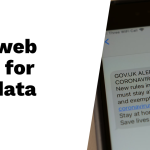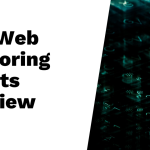Dark web monitoring helps managed service providers (MSPs) find stolen data and compromised credentials by scanning underground sources like forums and leak sites. What really works includes breach-based prospecting, which uses real-time data to identify companies at risk, making outreach much more effective. Providing one-time scan reports with clear remediation steps also helps MSPs showcase value quickly. Continuous automated monitoring with real-time alerts turns one-time clients into steady revenue streams through subscriptions. White-labeling these services builds brand trust and control. On the other hand, generic reports, manual processes, and poorly targeted prospecting usually fail to engage clients or boost income effectively.
Table of Contents
- Overview of Dark Web Monitoring for MSPs
- Effective Breached Companies-Based Prospecting Strategies
- Using One-Time Scan Reports to Showcase Client Risks
- Benefits of Automated Continuous Monitoring and Alerts
- Leveraging White-Labeling to Strengthen MSP Branding
- Utilizing Threat Intelligence Dashboards for Client Engagement
- Common Pitfalls in Dark Web Monitoring for MSPs
- Darkwebreport.io Case Study: Rapid MSP Revenue Growth
- Combining Onetime Scan Reports and Breached Prospecting to Multiply Revenue
- Recommendations for MSPs Implementing Dark Web Monitoring Services
- Frequently Asked Questions
11.1. How can MSPs effectively detect stolen data on the dark web without false alarms?
11.2. What are the common limitations of dark web monitoring tools for MSPs?
11.3. Why is continuous dark web monitoring important for MSPs instead of one-time scans?
11.4. How do privacy and legal concerns impact dark web monitoring by MSPs?
11.5. What role does human expertise play in dark web monitoring for MSPs?
Overview of Dark Web Monitoring for MSPs

Dark Web Monitoring (DWM) involves scanning hidden parts of the internet, like dark web forums, paste sites, leak sites, and even Telegram channels, to find compromised credentials and stolen data linked to client organizations. MSPs rely on DWM to spot security risks early, alert their clients about exposures, and suggest practical steps to reduce the chance of cyberattacks, such as password resets or patching vulnerabilities. This service goes beyond standard security tools, helping MSPs stand out by offering proactive protection that builds trust with clients through active surveillance of their digital footprint. Additionally, DWM uncovers leaked employee credentials, exposed customer data, or lost intellectual property, giving MSPs critical insights to protect their clients better. Since data sources on the dark web come from hacking groups, breached databases, and compromised accounts, coverage breadth matters: MSPs should pick platforms with wide data scope to ensure thorough protection. When combined with other threat intelligence tools, DWM enhances the overall security posture of client organizations. Also, offering recurring monitoring services creates steady revenue streams for MSPs, turning one-time checks into ongoing subscriptions that provide continuous value and security assurance.
Effective Breached Companies-Based Prospecting Strategies
Using breach data to identify companies with exposed credentials is a powerful way for MSPs to focus their prospecting. Filtering by industry, company size, or geography helps narrow down targets to those most relevant. Reaching out to companies that have recently experienced breaches makes conversations more timely and increases response rates because prospects recognize the immediate risk. Platforms like darkwebreport.io provide real-time access to lists of compromised businesses, allowing MSPs to quickly prioritize outreach. Presenting concrete breach evidence during sales discussions creates a sense of urgency and builds credibility, showing prospects the real danger they face. Segmenting prospect lists based on breach severity or type lets MSPs tailor messaging to each company’s specific situation, improving engagement. Personalizing outreach emails with breach insights not only highlights client-specific threats but also demonstrates the MSP’s expertise and attention to detail. Combining breach data with public company information, such as financials or recent news, helps qualify leads more accurately, focusing effort on the most promising opportunities. Tracking breach trends across sectors enables MSPs to proactively target high-risk industries before competitors do. Automation plays a key role in keeping breach lists current and scalable, avoiding the delays and errors of manual data collection. Finally, MSPs should measure the ROI of breach-based prospecting by monitoring conversion rates from outreach campaigns, ensuring efforts translate into new clients and revenue growth.
Using One-Time Scan Reports to Showcase Client Risks
Offering one-time dark web scans is an effective way for MSPs to quickly highlight a client’s current exposure to stolen credentials or leaked information. These reports provide clear breach summaries, risk scores, and details about compromised accounts along with their sources, giving clients concrete data about their vulnerabilities. When MSPs white-label these reports with their branding, it adds professionalism and builds trust, making the insights feel more personalized and credible. Presenting tangible breach evidence helps start important conversations, proving the MSP’s value from the outset. Clients often react positively when shown real risks within their organization, which opens the door to upselling continuous monitoring services. Automating the generation and delivery of these reports speeds up the process and reduces manual effort, allowing MSPs to respond promptly. Keeping the reports straightforward but detailed enough avoids overwhelming clients with technical jargon, while clear remediation steps guide them on how to address the issues. Tracking client feedback on these reports allows MSPs to refine the content and format over time, improving how effectively they communicate risk and encourage further engagement.
Benefits of Automated Continuous Monitoring and Alerts
Automated continuous monitoring offers MSPs a significant edge by scanning client assets nonstop, 24/7, to catch new breaches the moment they happen. This real-time vigilance means MSPs receive instant alerts about emerging threats, enabling swift action that can drastically reduce potential damage and limit exposure. Instead of reacting after the fact, MSPs can proactively intervene, often offering remediation services before breaches escalate. This immediacy not only protects clients but also deepens trust and strengthens long-term relationships. From a business perspective, continuous monitoring transforms one-time clients into steady recurring revenue streams, with subscription pricing models often marked up between 200% and 400%, boosting profitability considerably. Automation cuts down on manual effort, allowing MSP teams to scale their services across multiple clients consistently without sacrificing quality or speed. Detailed alert dashboards help MSPs prioritize risks effectively, focusing attention where it matters most. Clients value this proactive approach to security, knowing their digital assets are under constant watch. Ultimately, automated continuous monitoring and alerts create a dependable, scalable, and profitable service that benefits both MSPs and their clients.
Leveraging White-Labeling to Strengthen MSP Branding
White-label platforms give MSPs the ability to fully customize dashboards, reports, and client notifications with their own logos, colors, and messaging. This level of brand ownership is crucial for building client trust and positioning the MSP as a security expert rather than just a reseller of third-party services. By controlling the visual identity and communication style, MSPs can present dark web monitoring as part of their proprietary security suite, which helps differentiate their offerings in a crowded market. White-labeling also allows MSPs to set their own pricing, billing cycles, and service packages, enabling flexible business models that align with client needs and maximize profit margins. Features like branded report templates, alert messages, and client portals create a seamless and professional experience, reinforcing client loyalty and satisfaction. When clients see a consistent, MSP-branded interface and communications, they are less likely to associate the service with an external provider, which strengthens the MSP’s relationship and makes upselling or cross-selling additional security services easier. Ultimately, white-labeling is not just a cosmetic option; it’s a strategic tool that helps MSPs own the entire client experience and build a stronger, more trusted brand in the competitive cybersecurity landscape.
Utilizing Threat Intelligence Dashboards for Client Engagement
Threat intelligence dashboards are powerful tools that MSPs can use to engage clients more effectively by visualizing complex breach data in an easy-to-understand format. These dashboards display breach counts, severity levels, trends, and historical data, giving clients clear insight into their current security posture and ongoing risks. By presenting visual risk summaries, MSPs can prioritize remediation efforts based on the impact and source of breaches, helping clients focus on the most critical issues first. During client meetings or quarterly reviews, dashboards serve as interactive engagement tools, where charts and graphs support discussions around emerging threats and potential upsell opportunities. Real-time updates keep clients informed and involved in their security management, while customizable views allow MSPs to tailor information for different roles or industry contexts, making the data more relevant and actionable. Additionally, MSPs can track progress in reducing client risks through dashboard metrics, demonstrating continuous value beyond initial assessments. When combined with timely alerts, these dashboards create a comprehensive reporting package that reinforces trust and supports long-term client relationships.
Common Pitfalls in Dark Web Monitoring for MSPs
Many MSPs struggle with dark web monitoring because they fall into several avoidable traps. One frequent issue is delivering generic reports that lack actionable insights. When clients receive vague data without clear remediation steps or risk prioritization, their interest wanes and renewal rates drop. Another common mistake is using mass outreach campaigns that don’t target companies with actual breaches. This scattergun approach wastes time and yields poor conversion rates since prospects don’t see the relevance. Manual monitoring and alerting also slow down response times, causing MSPs to miss critical opportunities to act quickly and demonstrate value. Pricing services based solely on cost rather than the value provided is another pitfall that leaves money on the table and undermines long-term profitability. Skipping white-labeling options can hurt MSP credibility, as clients prefer working with trusted brands rather than third-party platforms. Limited breach data sources further weaken protection, giving clients a false sense of security when exposures go undetected. Ignoring the severity of breaches and failing to prioritize risks frustrates clients who expect guidance on what to fix first. Overcomplicated reports filled with jargon confuse clients and reduce their perceived usefulness, making it harder to build trust. Inconsistent client communications caused by lack of automation can lead to missed follow-ups and lost sales. Lastly, MSP teams that aren’t trained on the latest breach trends and remediation strategies remain reactive instead of proactive, missing chances to position themselves as true security partners.
- Providing generic or non-actionable reports reduces client interest and renewal rates.
- Mass outreach without targeting breached companies leads to low conversion and wasted effort.
- Manual monitoring and alerting processes delay response times and miss opportunities.
- Underpricing services based on cost rather than value leaves revenue on the table.
- Failure to use white-labeling diminishes MSP credibility and client trust.
- Limited breach data sources result in incomplete threat coverage and false reassurance.
- Ignoring breach severity and risk prioritization frustrates clients and weakens engagement.
- Overcomplicating reports with jargon confuses clients and reduces perceived usefulness.
- Failing to automate client communications causes inconsistent follow-ups and missed sales.
- Not training MSP teams on breach trends and remediation leaves services reactive instead of proactive.
Darkwebreport.io Case Study: Rapid MSP Revenue Growth
Darkwebreport.io offers MSPs a powerful breach finder tool that locates companies with compromised credentials, filtered by industry and location. This targeted approach helps MSPs quickly identify high-value prospects facing real risks. By using white-label outreach templates based on actual breach data, MSPs see client engagement rates jump up to 65%, turning cold calls into meaningful conversations. Automated branded reports deliver clear breach details and actionable remediation advice, which not only reinforces MSP authority but also builds trust with clients. Many MSPs convert one-time assessment clients into recurring monitoring subscriptions, achieving markup margins between 200% and 400%. The platform’s ease of use is a major factor in its success: setup and deployment take less than 60 minutes, backed by 24/7 partner support. MSPs have reported identifying 35 potential clients in just their first week and adding thousands in monthly recurring revenue within weeks. For example, some have grown their dark web monitoring services to earn $4,500 monthly, with others exceeding $8,000 in added MRR by leveraging these tools. Features like real-time breach monitoring, an extensive credential intelligence hub, broad breach database coverage, and CRM/email export functions streamline operations and client engagement. Full white-label customization lets MSPs maintain their branding and control pricing, helping them differentiate from competitors and create stronger client retention. Overall, darkwebreport.io enables MSPs to rapidly increase revenue while providing valuable, proactive security services that clients appreciate.
| Aspect | Details |
|---|---|
| Prospecting | Use breach finder to locate companies with compromised credentials filtered by industry and location. |
| Engagement | White-label outreach templates boost client engagement rates up to 65%. |
| Reporting | Automated branded reports deliver clear breach details and remediation advice. |
| Revenue | Convert one-time assessments into recurring monitoring subscriptions with 200%-400% markup margins. |
| Results | Added thousands in monthly recurring revenue within weeks; e.g., 35 potential clients identified in first week, $4,500 monthly revenue noted. |
| Setup | Less than 60 minutes with 24/7 partner support. |
| Features | Real-time breach monitoring, credential intelligence hub, extensive breach database coverage, CRM/email export functions. |
| White-Labeling | Full customization supports MSP branding and pricing control. |
| Competitive Edge | Helps MSPs differentiate from competitors and increase client stickiness. |
Combining Onetime Scan Reports and Breached Prospecting to Multiply Revenue
Using breached companies prospecting allows MSPs to zero in on high-risk potential clients who are already exposed, making outreach much more targeted and effective. Offering a one-time scan report to these prospects serves as a tangible proof point, showing them exactly where their vulnerabilities lie and opening the door to security conversations that might otherwise be ignored. These reports, especially when white-labeled with MSP branding, boost credibility and position the MSP as a trusted advisor rather than just a vendor. Once a client sees their exposure through a one-time scan, MSPs can educate them on the benefits of continuous monitoring to catch new threats early. Automating the generation and delivery of these reports not only speeds up the sales process but also improves client responsiveness, helping MSPs convert one-time assessments into steady recurring revenue streams. By combining breach data from prospecting with specific scan results, MSPs can tailor remediation advice that resonates with the client’s actual risk profile, increasing the chances of upselling ongoing services. Prioritizing sales efforts on prospects with the highest breach severity ensures resources are spent efficiently, and tracking conversion metrics helps optimize the balance between prospecting and assessment services. In practice, linking breached companies prospecting, one-time scan reports, and continuous monitoring into a seamless sales and service pipeline multiplies revenue opportunities and builds lasting client relationships.
Recommendations for MSPs Implementing Dark Web Monitoring Services
MSPs should start by integrating breach-based prospecting tools that pinpoint companies with real-time exposures. This approach helps prioritize leads who are already at risk, making outreach more relevant and effective. Offering one-time dark web scan reports is a practical way to lower the barrier for client engagement, providing immediate value that showcases actual vulnerabilities. To build steady income, continuous monitoring paired with real-time alerts is essential, allowing MSPs to respond promptly to new threats and convert clients to ongoing subscriptions. Using white-label platforms is key to maintaining brand control and customizing pricing models that reflect the service’s value. Automating outreach with data-driven, professional templates can boost engagement rates significantly, turning cold leads into interested prospects. MSPs must focus on delivering actionable insights that highlight risk severity, helping clients understand the urgency and prioritize remediation, which improves satisfaction and retention. Keeping internal teams updated on breach trends and dark web activity ensures everyone is prepared to support clients effectively. Selecting platforms with broad breach data coverage and SOC 2 compliance guarantees both comprehensive threat visibility and trustworthiness. Finally, training sales and technical staff to interpret breach data and communicate clearly with clients is vital for service credibility. Tracking metrics like client acquisition, retention, and revenue growth will help MSPs measure success and fine-tune their dark web monitoring offerings over time.
Frequently Asked Questions
1. How can MSPs effectively detect stolen data on the dark web without false alarms?
MSPs need to use advanced monitoring tools that combine automated scanning with human analysis. This helps filter out irrelevant information and focus on real threats. Setting clear alert thresholds and regularly updating search parameters also reduce false positives, ensuring that MSPs only act on credible data leaks.
2. What are the common limitations of dark web monitoring tools for MSPs?
Many tools struggle with the dark web’s constantly changing structure and hidden forums, which limits the scope of data they can access. Some tools also cannot track new or invitation-only marketplaces effectively. This means MSPs might miss some incidents if they rely solely on automated scans without manual checks or supplemental investigation methods.
3. Why is continuous dark web monitoring important for MSPs instead of one-time scans?
Data on the dark web changes rapidly with new breaches and leaks happening frequently. One-time scans provide just a snapshot and might miss future threats. Continuous monitoring allows MSPs to detect emerging risks sooner, enabling faster response and reducing the chance for stolen information to be exploited.
4. How do privacy and legal concerns impact dark web monitoring by MSPs?
MSPs must ensure their monitoring practices comply with privacy laws and avoid collecting excessive personal data. They should use ethical techniques that do not involve illegal access or hacking. Staying within legal boundaries protects both the MSP and their clients from potential liability while still allowing effective threat detection.
5. What role does human expertise play in dark web monitoring for MSPs?
Human expertise is essential to interpret complex dark web data, validate threats, and assess the context of findings. Automated tools provide volume, but experts filter noise and identify credible risks. Skilled analysts also adapt monitoring strategies based on evolving dark web trends, which improves overall accuracy and usefulness for MSP clients.
TL;DR Dark web monitoring helps MSPs spot client risks by scanning underground sources for compromised data. Successful strategies include prospecting companies with breached credentials, offering one-time scan reports to showcase exposures, and providing automated continuous monitoring with real-time alerts. White-labeling services and threat intelligence dashboards boost branding and client engagement. Avoid generic reports, untargeted outreach, manual processes, and low pricing to maximize revenue. Platforms like darkwebreport.io enable MSPs to accelerate client acquisition and grow monthly recurring revenue significantly by combining targeted prospecting with branded assessments and ongoing monitoring.





